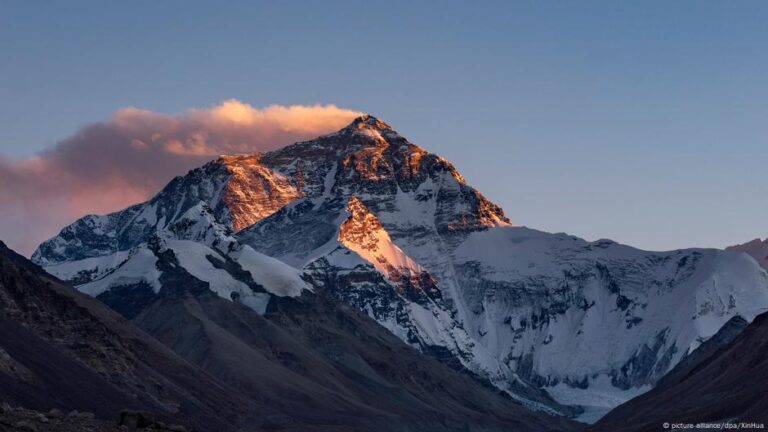On October 15, 2025, at the highest point on Earth, the summit of Mount Everest at 8,849 meters, American ski mountaineer Jim Morrison scattered the ashes of his partner, Hilaree Nelson, who died in a fatal accident three years ago. While attempting a ski descent from the 8,163 meter Manaslu in Nepal, she was caught in a small avalanche near the summit and fell to her death.
After taking a moment at the summit of Everest, Morrison strapped on his skis and began his descent through the “Supercouloir” of the North Face, a combination of two approximately 50-degree steep rock gullies filled with snow and ice.
Four hours and five minutes later, Morrison reached the base of the face at approximately 6,000 meters on the Central Rongbuk Glacier. Never before had anyone successfully negotiated on skis the descent down the North Face on the Tibetan side of Mount Everest. Only a few had even attempted it.
Tribute to deceased partner
“When I finally crossed the bergschrund [the crack between the base of the wall and the glacier], I cried. I’d risked so much, but I was alive,” Morrison told a reporter from his sponsor, National Geographic. “It felt like a tribute to Hilaree—something she’d have been proud of. I really felt her with me, cheering me on.”
Eleven other climbers had climbed with Morrison through the supercouloir to the summit—presumably with bottled oxygen, otherwise this would have likely been reported. Among them were mountain guides from the US-based commercial expedition operator Alpenglow Expeditions, experienced Sherpas from Nepal who secured the ascent route with ropes, and a camera crew led by Oscar-winning documentary filmmaker and mountaineer Jimmy Chin.
Extremely difficult and dangerous
Previously, only a handful of climbers had mastered the route, opened by the Japanese in 1980 – the last time 30 years ago. It is technically very demanding and extremely prone to avalanches. In 2002, Frenchman Marco Siffredi died while attempting to snowboard down it. His body has never been found.
“It was a mixture of survival skiing and actual shredding,” Morrison said after his successful descent. In the so-called Hornbein Couloir – named after Tom Hornbein, the first person to ascend Everest from the west ridge in 1963 – in the upper reaches of the face, the 50-year-old Morrison once had to unbuckle his skis and abseil 200 meters down bare rock.
“Some sections were smooth enough for real turns,” says Morrison. “Others were rutted and raised four feet up and down, like frozen waves.”
Third attempt
It was Morrison’s third attempt at a ski descent down Everest’s nearly 3,000-meter-high North Face. In 2023, the Sino-Tibetan authorities only granted him a climbing permit so late in the autumn that his team simply ran out of time.
In 2024, the expedition ended prematurely after a Nepalese climber was hit by a small avalanche at almost 8,000 meters and fractured his femur when he fell onto the rope. He was rescued, recovered, and was now one of the climbers who reached the summit with Morrison.
During last year’s expedition, the team found the human remains of British mountaineer Andrew Irvine, who had been missing since 1924, at the foot of Everest’s North Face: a foot in a shoe, with a name tag on his sock. Irvine and his companion George Mallory died 101 years ago while attempting to climb Everest for the first time. Mallory’s body was found in 1999.
First north-side descent
The first ski descent on the Tibetan north side of the mountain was achieved in 1996 by Hans Kammerlander of Italy. He had ascended the normal route via the northeast ridge – without Sherpa support and without bottled oxygen – and skied down the same route. However, due to a lack of snow, Kammerlander had to remove his skis on several sections.
In 2000, on the Nepalese south side of Everest, Slovenia’s Davo Karnicar became the first to descend to the base camp completely on skis via the normal route, after ascending with a breathing mask.
Three weeks ago, Polish ski mountaineer Andrzej Bargiel achieved this feat for the first time without bottled oxygen on the Nepalese side of the mountain. However, he was assisted on the ascent by several Nepalese mountaineers wearing breathing masks.
This article was originally published in German.
Edited by: Jonathan Harding


